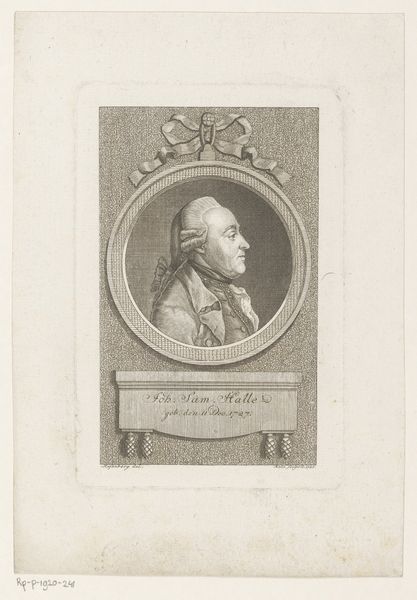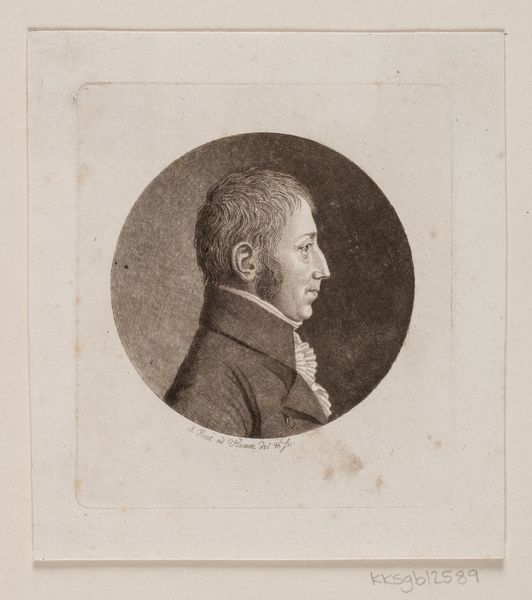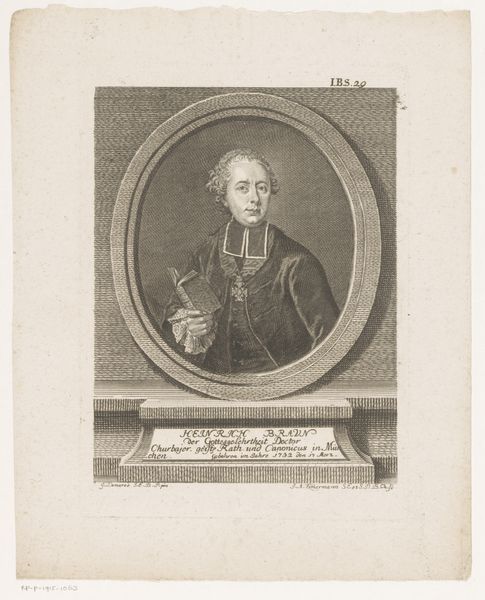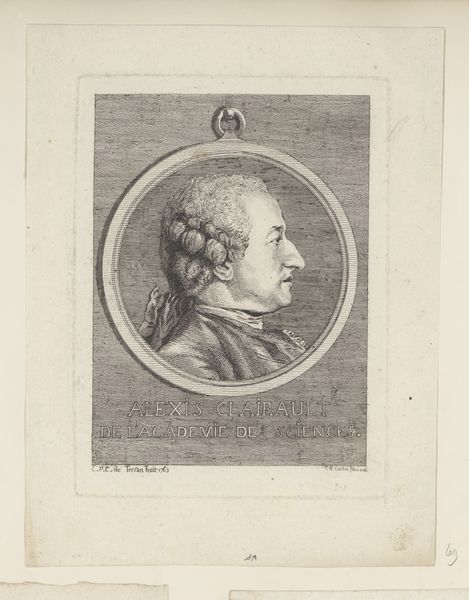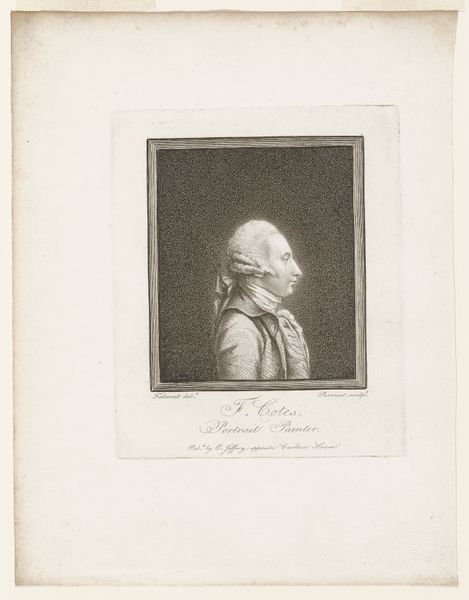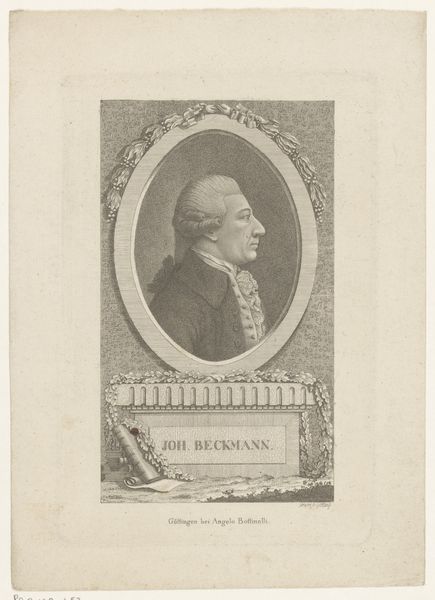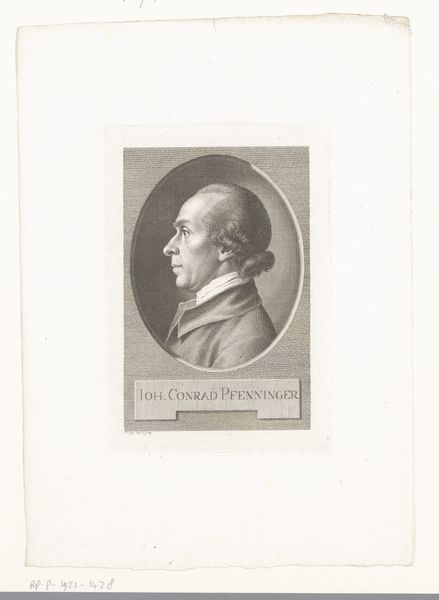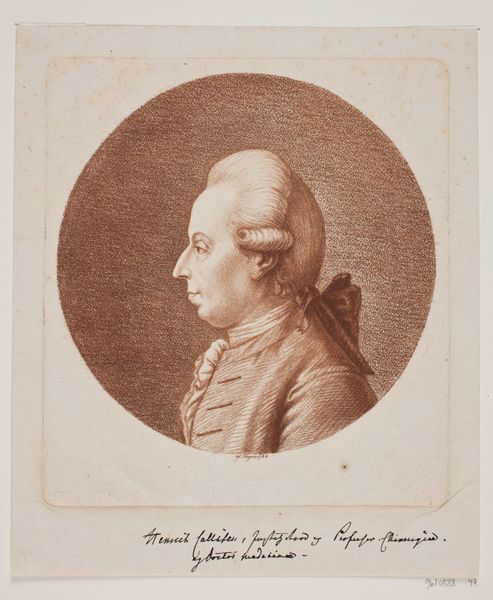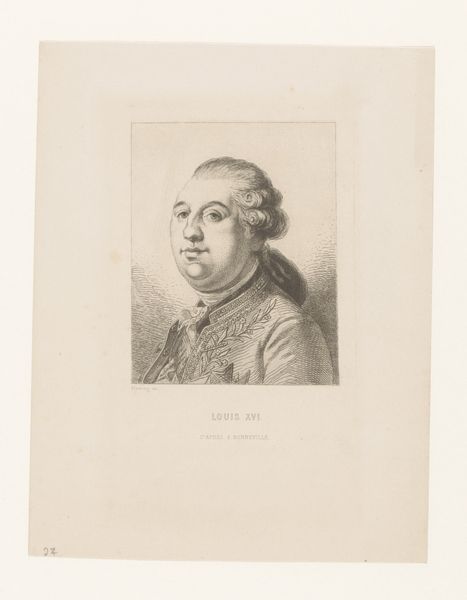
drawing, print, engraving
#
portrait
#
drawing
#
neoclacissism
# print
#
engraving
Dimensions: height 247 mm, width 201 mm
Copyright: Rijks Museum: Open Domain
Curator: This engraving, created by Johann Heinrich Lips in 1779, is titled "Portret van Johann Heinrich Füssli." The piece is held here at the Rijksmuseum. Editor: There's a certain… austerity to it, isn't there? The sharp profile, the crisp lines, almost a stoic feel to the image. Curator: Absolutely. It very much reflects the Neoclassical style, doesn't it? Lips was known for his portrait engravings, capturing the intellectual elite of the time. This portrait presents Füssli, also known as Henry Fuseli, who was a Swiss-British painter, draughtsman, and writer. Think of his famous painting "The Nightmare"; quite sensational at the Royal Academy. Editor: So this engraving serves almost as a counterpoint, framing Fuseli within this almost severe visual structure. Was this about placing him among his peers in a certain intellectual hierarchy? It almost seems designed to domesticate someone as daring as Füssli. Curator: To some extent, yes. Portraiture in this period served a crucial role in defining status and contributing to public memory. Putting forward a sitter's intellect was considered an exercise in preserving reputation. However, you can't ignore how this image might resonate with power dynamics. Consider the limited access to portraiture for women and people of color at that time, these kinds of representations were simply inaccessible for many. Editor: So this aesthetic wasn't neutral; it actively participated in structures of privilege and authority, even through what we perceive as ‘art.’ I can see how his somewhat closed posture, arms crossed, relates to the imagery of leadership. Curator: Indeed. Lips’ work, although small in scale, provided a platform for figures such as Füssli to disseminate their presence within the wider cultural sphere, furthering their agenda as progressive intellectual leaders. Editor: The print also makes me think of distribution, the ease with which his image could be shared, solidifying a particular idea of him among a broader audience. It brings to light how portraiture becomes enmeshed with power, class, and accessibility. Curator: Right, understanding such dynamics helps us realize art is more than just aesthetics—it’s interwoven with intricate socio-political contexts. Editor: Exactly. Seeing this portrait encourages questions beyond just artistic skill. It pushes us to look at representation through a more questioning, critical lens.
Comments
No comments
Be the first to comment and join the conversation on the ultimate creative platform.

